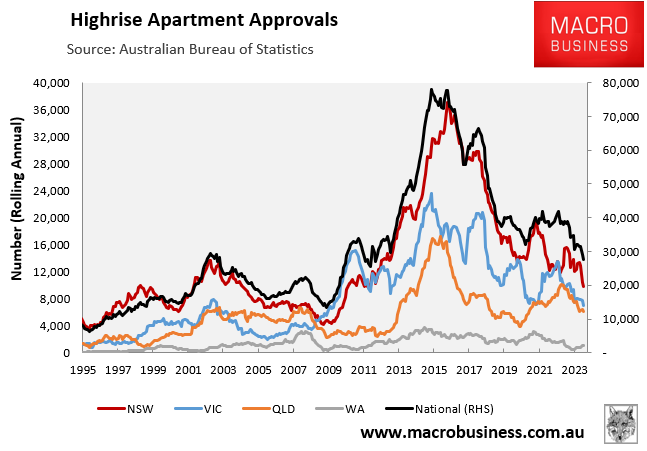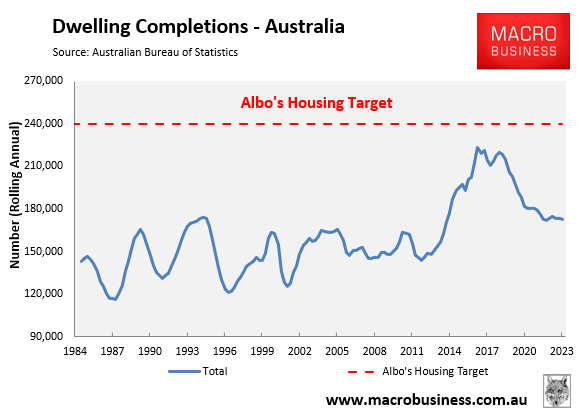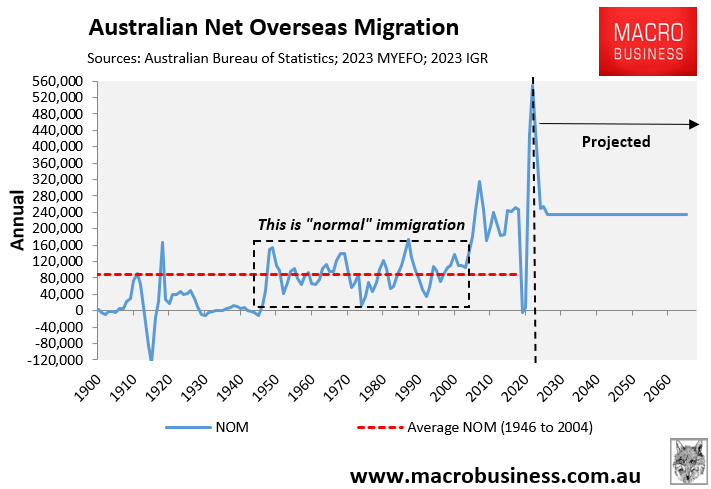The last decade saw the greatest increase in high-rise apartment construction in Australia’s history, concentrated in the capital cities.

This unprecedented growth in high-rise apartment complexes coincided with increased building faults and structural defects, such as cracking foundations, water leaks, balcony defects, and flammable cladding.
Notable examples include Sydney’s Opal and Mascot Towers, which were evacuated following significant cracking.
A January survey by the NSW government found that more than half of apartments registered between 2016 and 2022 suffered at least one serious defect.
These defects have cost owners and taxpayers millions of dollars in repair costs.
Bronwyn Weir, a construction lawyer, warned that “thousands and thousands of apartments have serious defects in their buildings”, describing the problem as “enormous”.
“We have what is now you know, a systemic failure that is quite difficult to unravel”.
“Some of these buildings could potentially be a write-off”, she warned.
Engineer Leith Dawes also warned that purchasing an off-the-plan apartment in Australia had turned into a game of “Russian roulette” due to the numerous building faults that go undetected.
The Albanese government has set a goal of constructing 1.2 million homes over five years, or 240,000 homes each year for five years in a row. The majority of these are projected to be high-density apartment buildings in our largest cities.
This quantity of development would be greater than anything Australia has ever accomplished, given that the record single year of new home construction was only 223,600 in 2017, during the aforementioned apartment construction boom:

Earlier this year, Bronwyn Weir warned that developing so many units so quickly would most likely result in lower quality and an increase in faulty apartment buildings.
“Australia’s chronically undersupplied housing market is heading for another development boom and apartments will lead the way”, wrote The AFR’s Michael Bleby in January.
“On current estimates, 50% of what will be built will have serious defects”, Weir said.
SJA Construction Services founder and court expert Steve Abbott echoed Weir’s concerns, warning over the weekend that a “forced construction boom” in the residential sector could lead to a wave of building defects over the next 10 to 20 years:
“Governments are trying to force the industry into a residential boom without the resources – both within the industry and governments – to manage such a workload,” Abbott said of the new building targets.
“The construction industry needs a reliable supply of high-quality skills, staffing, a sufficient number of planners and building certifiers, a reliable talent pipeline and building materials.
“State governments need better controls in inspections and certifications – and those who carry out this important service must also be highly skilled and deeply experienced”…
“We need to get back to basics and do things right – the foundation on which the industry was built,” he said.
If Australia’s building sector increases apartment construction to meet Labor’s housing targets, we will witness outcomes similar to those of the previous decade.
Corners will be cut, quality will degrade, construction standards will fall, and tens of thousands of low-quality high-rise apartments will be constructed throughout our major cities.
Instead of pursuing a high-rise slum future, the federal government should restrict immigration to a level commensurate with the country’s ability to provide high-quality housing and infrastructure and the carrying capacity of the natural environment (particularly water resources).
Lower, sustained immigration demand in line with pre-2005 norms (see black box in the chart below) will encourage the building sector to prioritise quality over quantity in construction while easing the country’s rental crisis.

The high-rise apartment boom of the last decade was a complete disaster, and buyers and taxpayers are still footing the bill.
Why repeat the same mistakes by increasing construction rates to meet the unsustainable immigration-driven population expansion?
Australians don’t want to live in low-quality, high-rise slums.

